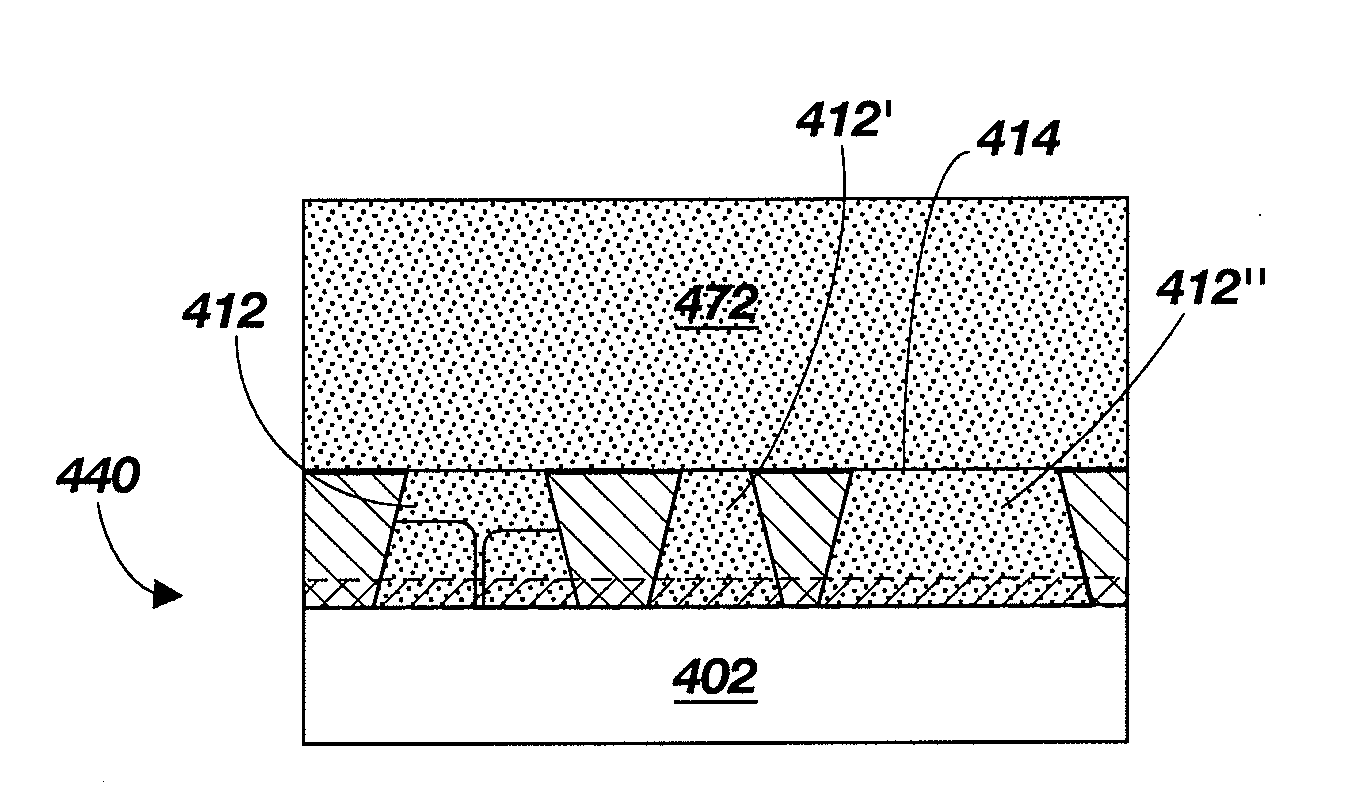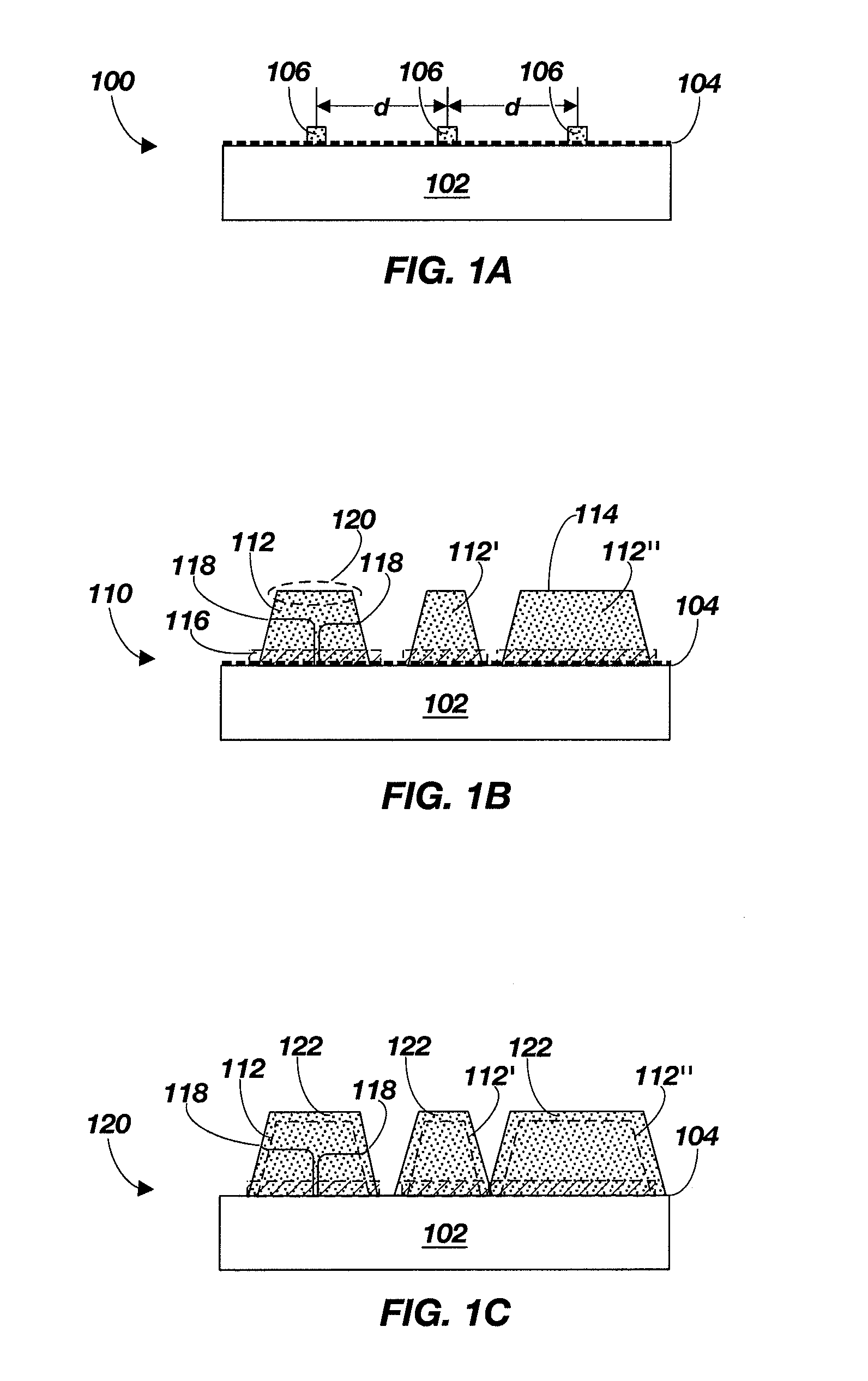Epitaxial methods and structures for forming semiconductor materials
a technology of semiconductor materials and substrates, applied in the direction of semiconductor devices, basic electric elements, electrical apparatus, etc., can solve the problems that random arrangement of islands of high quality materials is not practical useful for the formation of substrates or device structures
- Summary
- Abstract
- Description
- Claims
- Application Information
AI Technical Summary
Benefits of technology
Problems solved by technology
Method used
Image
Examples
examples
[0142]FIG. 5 illustrates a scanning electron microscopy (SEM) top view image and FIG. 6A-B illustrate transmission electron microscopy (TEM) side view images of actual examples of InGaN island structures formed on base substrates utilizing embodiments of the invention previously outlined. In particular, island structures 612, 612′ and 612″ (of FIG. 6A) correspond to those illustrated in the intermediate structure 110 in FIG. 1B. In addition, FIG. 6C illustrates a substantially continuous layer of strain-relaxed InGaN produced using embodiments of the invention.
[0143]The island structures of FIGS. 5 and 6A-B have been produced by the following means. Prior to deposition of the InGaN island structures, a sapphire substrate is heated within a MOVPE reactor to a temperature of between 600-900° C. In certain embodiments, the temperature is maintained at 750° C. whilst ammonia is introduced into the reaction chamber for 3-5 mins to enable the nitridation of the sapphire surface. Subsequen...
PUM
| Property | Measurement | Unit |
|---|---|---|
| distance | aaaaa | aaaaa |
| vertical/lateral aspect ratio | aaaaa | aaaaa |
| aspect ratio | aaaaa | aaaaa |
Abstract
Description
Claims
Application Information
 Login to View More
Login to View More - R&D
- Intellectual Property
- Life Sciences
- Materials
- Tech Scout
- Unparalleled Data Quality
- Higher Quality Content
- 60% Fewer Hallucinations
Browse by: Latest US Patents, China's latest patents, Technical Efficacy Thesaurus, Application Domain, Technology Topic, Popular Technical Reports.
© 2025 PatSnap. All rights reserved.Legal|Privacy policy|Modern Slavery Act Transparency Statement|Sitemap|About US| Contact US: help@patsnap.com



